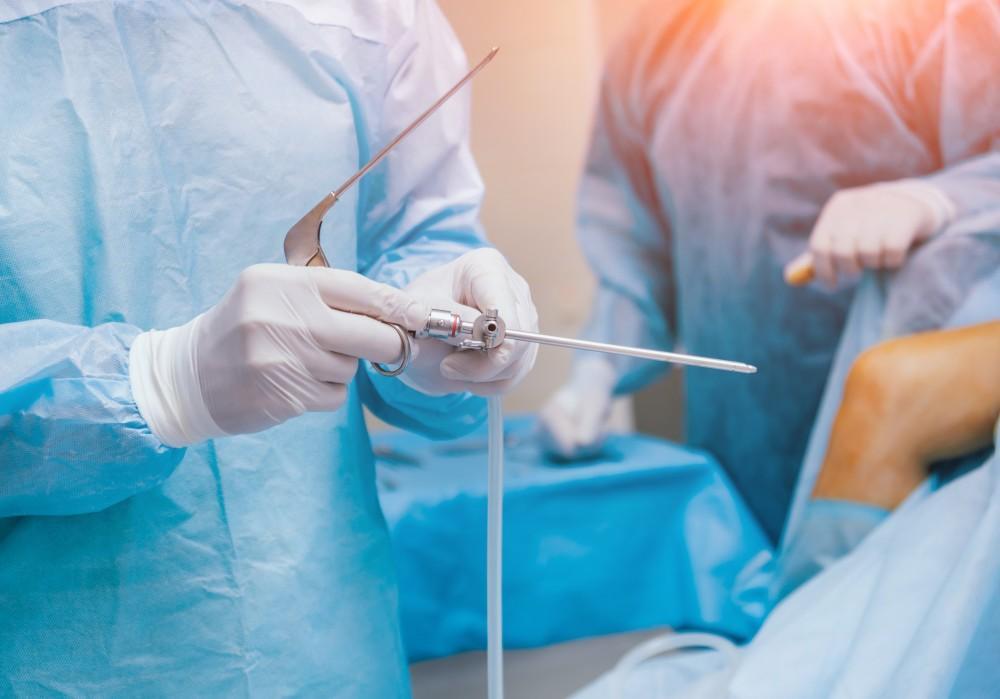Arthroscopic vs. Open Repair: Choosing the Right Surgery for Your Rotator Cuff
It’s no secret that a rotator cuff injury can cause significant pain and disability. It can come on in an instant or develop slowly with time. Either way, the damage can require surgical intervention to ease symptoms and restore function in the area.
But surgery isn’t a one-size-fits-all solution.
Dr. Jared Tadje uses minimally invasive arthroscopic techniques whenever possible at Tadje Orthopaedics in Meridian, Idaho. But some injuries require traditional open methods to provide the best results — or a combination of both.
If you have a rotator cuff tear, here’s what you should know about surgical solutions.
Understanding Rotator Cuff Tears
The term “rotator cuff” describes the muscles and tendons in the shoulder. Together, they form a cuff-like band of tissue that covers the shoulder joint, holding it in place and giving it the ability to move.
Injuries to this area involve the tendons that attach the muscles to the bone. They can occur because of a traumatic injury or from overuse. They can also vary in severity from partial to complete tears.
Signs of a rotator cuff injury include:
-
Arm weakness
-
A dull ache in the shoulder
-
Problems lifting your arm or combing your hair
-
Difficulty reaching behind your back
As you might suspect, conservative methods can often relieve symptoms associated with mild rotator cuff injuries. But more significant injuries — or those that include more extensive shoulder issues — often benefit from surgery.
When to Consider Surgery
Dr. Tadje typically recommends surgical interventions for a variety of reasons, such as:
-
Pain at rest or at night
-
Symptoms lasting 6-12 months
-
Symptoms that don’t improve with physical therapy after 3-4 months
-
Significant weakness and lost function in the shoulder
-
Damage from a recent, acute injury
-
Tears larger than 3 centimeters surrounded by healthy tendon tissue
During your assessment, Dr. Tadje can also provide insight into the best surgical method for repairing your rotator cuff.
Types of Surgery for Rotator Cuff Injuries
Dr. Tadje takes several factors into account when considering the ideal approach for repairing your rotator cuff injury, such as the size of the tear, your anatomy, and the health of the surrounding bone and tendon tissue.
Based on this information, Dr. Tadje could move forward with a few options.
Arthroscopic Repair
During an arthroscopic rotator cuff repair, Dr. Tadje inserts a tiny camera into the shoulder joint. This tool, known as an arthroscope, sends a live feed to a monitor. Dr. Tadje uses this real-time footage to perform the repair with special miniature instruments inserted through additional tiny incisions or “portals.”
This is the least invasive option because it uses very small incisions and thin instruments.
Open Repair
Unlike an arthroscopic repair, which uses a few tiny incisions, a traditional open repair uses one large incision to access the surgical site. This approach gives Dr. Tadje full visibility and accessibility to the torn tendon.
Open repairs can provide good outcomes for large or complex rotator cuff injuries or those involving additional reconstruction. Dr. Tadje could also suggest open repair if you have bone spurs on the underside of your acromion — the bony tip on the outer edge of your shoulder blade.
Mini-Open Repair
Sometimes, Dr. Tadje uses the best of both worlds to repair a rotator cuff injury: mini-open repair.
When performing this type of surgery, Dr. Tadje uses arthroscopy to evaluate and repair damage within the joint and a smaller open incision to repair the tendon itself.
Recovery and Results
All of these methods offer equal relief, improved function, and overall satisfaction. And Dr. Tadje performs them as out-patient procedures, meaning you can go home the same day. You can usually expect significant improvement 4-6 months after surgery.
Are you curious to see which method is the best treatment option for your rotator cuff injury? Contact Tadje Orthopaedics to schedule a visit with Dr. Tadje by calling our office in Meridian, Idaho, today at 208-515-2654.

